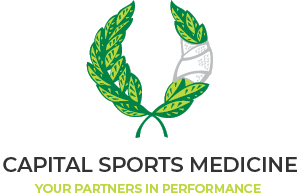Welcome to our Blog
Hi and welcome to the first of a series of Capital Sports Medicine blogs. These are designed to help keep our current and future patients informed about our services which include physiotherapy, podiatry, massage, sports physicians and many more.
The blogs are going to take us on a journey through what these services are, how we perform an assessment and how we manage different conditions.
Our primary goal is to assist you in your recovery from injury or illness. In order to this we need your help, what do you have questions about? What do you want to know more about?
The initial articles will focus on physiotherapy.
In order for you the patient and us the physiotherapists to have a successful collaboration we must first understand what each of us brings to the table. Where better to start than what exactly does a physiotherapist do?
The definition of physiotherapy as outlined by the CSP (chartered society of physiotherapists, the British version of physiotherapy New Zealand) is that it helps restore movement and function when someone is affected by injury, illness or disability. What does this mean for you? Physiotherapy in New Zealand is direct access, so you can walk (or hobble) in off the street and come to see us. This is where our unique training comes into play. Physiotherapy is a science based profession and we are taught not only about neuromusculoskeletal conditions such as back and neck pain and the usual sprains and strains but also neurological conditions such as stroke, multiple sclerosis and Parkinson’s disease. We are also taught about cardiovascular rehabilitation involving rehabilitation post heart attack/chronic heart disease and respiratory conditions such as asthma, COPD, cystic fibrosis. Within the scope of neuromuscular rehabilitation comes orthopaedics where we get taught both how to assess for a fracture or other major ligament injuries and the best rehabilitation strategies post-operatively.
This is just what we get taught at undergraduate level. We then further develop interests and specialities as we gain more experience. This ranges from treating headaches and dizzy patients, to acupuncture and dry needling, running biomechanics and sport specific rehabilitation programmes.
So I said that physiotherapy was direct access what does this mean? It means that we are a front line profession so we need to screen for all conditions not just the obvious sprains and strains and we do this through our subjective assessment (I will be doing a blog on what we do in this and why we ask the questions we do). We can refer for X-Rays if an assessment tool called the Ottawa guidelines deem it appropriate and we can also refer for ultrasound for more muscle and tendon issues. Once we have performed our subjective assessment and we think you are a candidate for physiotherapy we will perform an objective assessment (the physical tests). If we don’t think you are a candidate for physiotherapy we will refer you to the appropriate professional whether that be the sports doctor (blog to come), podiatrist if your foot is the source of the symptoms (blog to come) or back to your GP if blood tests or pain medication required, onto orthopaedics if there is a fracture or anybody else deemed appropriate.
The objective assessment is based around your range of movement, your ability to load e.g walk, sit-stand, squat or whatever your limitation may be. We then perform relevant tests to differentiate the structure at fault. We then have a barrage of treatment techniques we can use to help you on your road to recovery.
Whatever the issue you will be well looked after at Capital sports medicine.


